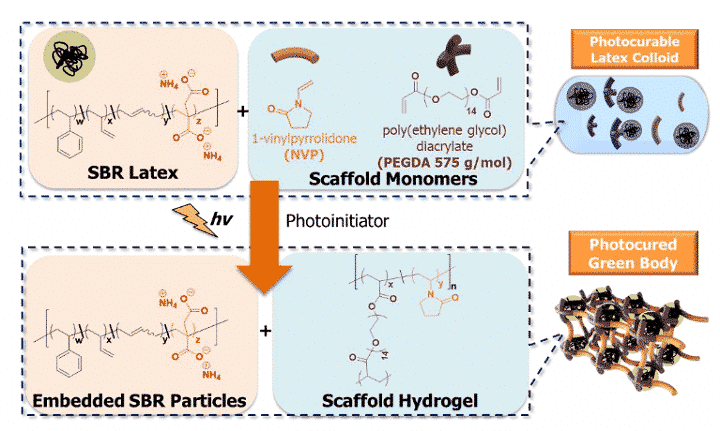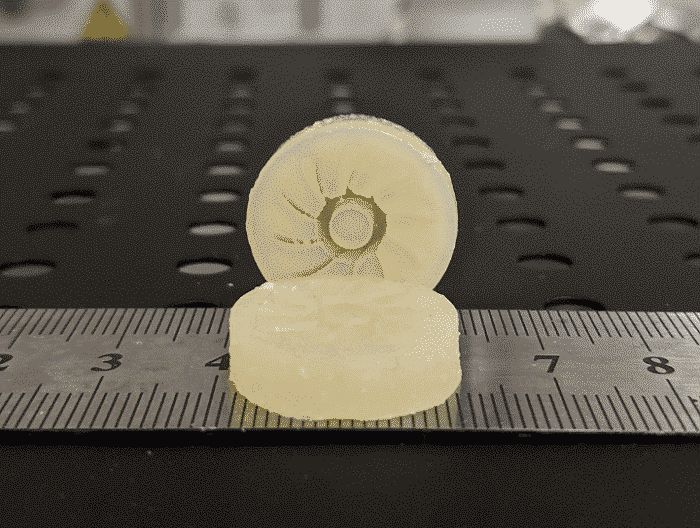Achieving scientific or engineering breakthroughs requires a lot of work and research, but also teamwork. When the interdisciplinary group of researchers at Virginia Tech’s Macromolecular Innovation Institute (MII), the Faculty of Science and the Faculty of Engineering worked together to come up with a novel way to 3D print latex rubber, a development that the university states “has been documented only a handful of times in scientific literature.” With the support of the National Science Foundation award and the academic connection with the industry program, Virginia Tech also collaborated with Michelin North America on the project.
Timothy Long, a professor of chemistry and a co-principal investigator, said, “My philosophy is these types of innovations are only achievable when you partner with people who are very different from you. This project represents the quintessential example of interdisciplinary research. Neither of our labs would be able to accomplish this without the other.”
Rubber-like elastic material latex is usually found in paint and gloves, and is actually a group of polymers that are coiled like a snake in nanoparticles dispersed in water. After successful 3D printing, since the technology allows materials to be made into complex geometries, it can be used in many applications, such as medical equipment, shock absorbers, and soft robots. It is important to note that this is not the first time we have seen 3D printed latex-researchers from Queen Mary University of London published a paper last year that involved them using drop-on-demand method to print this tricky material. However, the Virginia Tech team went in a different direction and used barrel photopolymerization technology to publish the results in their journal articles.

“Vat photopolymerization (VP) additive manufacturing fabricates intricate geometries with excellent resolution; however, high molecular weight polymers are not amenable to VP due to concomitant high solution and melt viscosities. Thus, a challenging paradox arises between printability and mechanical performance. This report describes concurrent photopolymer and VP system design to navigate this paradox with the unprecedented use of polymeric colloids (latexes) that effectively decouple the dependency of viscosity on molecular weight,” the abstract states.
Phil Scott, a fifth-year polymer science and engineering student, has been trying to synthesize latex materials with appropriate mechanical properties and molecular weight, but he has had no luck. Then he started to use commercial liquid latex, but he had to figure out how to modify the chemical composition so that it could be 3D printed in solid form. Unfortunately, this is easier said than done because liquid latex is very fragile.
“Latexes are in a state of zen. If you add anything to it, it’ll completely lose its stability and crash out,” explained Viswanath Meenakshisundaram, a fifth-year mechanical engineering Ph.D. student in the Design, Research, and Education for Additive Manufacturing Systems Lab.
To solve this problem, Scott built a bracket that can fix the latex particles in place. Then, add photoinitiator and other compounds, so that UV-assisted printing can be performed.

“When designing the scaffold, the biggest thing you have to worry about is stability of everything. It took a lot of reading, even stuff as basic as learning why colloids are stable and how colloidal stability works, but it was a really fun challenge,” Scott said.
The vice president uses ultraviolet rays to cure the material to shape the viscous resin into shapes. Meenakshisundaram’s task is to figure out how to print the material accurately… so he built his own patent-pending system. He knew that the machine needed to be able to print high-resolution features on a large area, and together with his consultant, co-lead researcher Christopher Williams (Christopher Williams), came up with a way to scan ultraviolet light on a large area.
Meenakshisundaram also has the idea of embedding a computer vision system on a custom printer to ensure accurate and detailed printing, because liquid latex particles will cause ultraviolet light to scatter on the surface of the latex resin. The camera captures an image of each individual latex resin barrel, and a custom algorithm allows the printer to essentially view the interaction of ultraviolet rays on the resin, and then adjust the printing parameters accordingly to cure only the shape to be printed.

All this hard work makes 3D printed latex parts (such as impellers) have strong mechanical properties in a semi-interpenetrating polymer network matrix. The team claims that there has never been a documented record of elastic latex materials.
“An interpenetrating polymer network is like catching fish in a net. The scaffold gives it a shape. Once you put that in the oven, the water will evaporate, and the tightly coiled polymer chains can relax, spread or flow, and interpenetrate into the net,” Meenakshisundaram explained.

The two professors of the team believe that 3D printing latex lays the foundation for printing many other materials (such as soft rubber) that they thought could not be printed in the past.
“When I was a graduate student working on this technology, we were excited to get unique performance from the shapes we could create, but the underlying assumption was we had to make do with very poor materials. What’s been so exciting about this discovery with Tim’s group is being able to push the boundary of what we assumed was the limit of a printed material’s performance,” said Williams.

